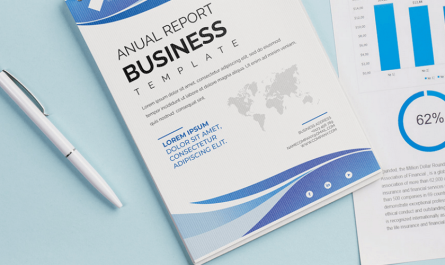How to Get Started with Today’s Most Common Investing Strategies
In today’s fast-paced financial world, understanding different investing strategies can be the key to long-term financial success. Whether you’re new to the market or looking to refine your approach, learning how to invest wisely can help you grow wealth, manage risks, and reach your financial goals. This guide breaks down the most common approaches for beginner investing and offers actionable investment tips to help you get started the right way.
Why Investing Matters More Than Ever
With inflation, changing interest rates, and uncertain global markets, simply saving money in a bank account isn’t enough to build wealth. Investing allows your money to work for you. By understanding basic investing strategies, you can take advantage of compounding returns and potentially earn much higher yields than traditional savings accounts.
Whether you invest in stocks, bonds, real estate, or index funds, the key is to start early and remain consistent. Even small amounts can grow significantly over time if invested wisely.
Understanding the Basics of Investing
Before jumping into different investing strategies, it’s important to understand what investing really means. In simple terms, investing is using your money to buy assets — like stocks, ETFs, real estate, or mutual funds — that you expect will increase in value or generate income.
Here are three essential principles every beginner should know:
- Risk vs. Reward: Higher potential returns often come with higher risks. It’s important to find a balance that matches your comfort level and financial goals.
- Diversification: Spreading your investments across different asset types reduces risk and provides more stability in volatile markets.
- Time Horizon: The longer you plan to keep your money invested, the more risk you can generally afford to take.
To explore how to balance your portfolio, read our guide on Building a Diversified Portfolio (example.com) and Long-Term Investment Planning (example.com).
Top Investing Strategies for Beginners
There are countless ways to invest, but some strategies stand out for their simplicity, effectiveness, and accessibility. Here are today’s most popular and proven investing strategies that can help you build a solid foundation.
1. Buy and Hold Investing
The buy-and-hold strategy involves purchasing quality assets — such as stocks, ETFs, or mutual funds — and keeping them for an extended period. The idea is simple: over time, markets tend to rise, despite short-term volatility. This long-term approach minimizes emotional decision-making and reduces trading fees.
This strategy aligns perfectly with beginner investing since it doesn’t require constant monitoring or complex trading decisions. Many of the world’s most successful investors, including Warren Buffett, advocate this approach.
2. Dollar-Cost Averaging (DCA)
Dollar-cost averaging means investing a fixed amount of money at regular intervals — regardless of market conditions. This technique helps smooth out market fluctuations and lowers the impact of volatility on your overall investment.
For instance, investing $200 each month into an index fund allows you to buy more shares when prices are low and fewer when prices are high. Over time, this consistent habit builds discipline and helps avoid emotional trading.
3. Index Fund Investing
Index funds are a favorite among new investors because they’re simple, diversified, and cost-effective. These funds track popular stock market indexes like the S&P 500, allowing you to own small portions of hundreds of companies at once.
According to Investopedia, index funds typically outperform most actively managed funds due to their low fees and broad diversification. For beginner investing, index funds offer a hands-off way to gain exposure to the market with minimal risk.
4. Dividend Investing
Dividend investing focuses on buying stocks that regularly pay dividends. These payments provide a steady income stream while your investments continue to grow in value. Many established companies, such as those in the utilities or consumer goods sectors, offer consistent dividends.
This approach is ideal for investors seeking both stability and income, especially retirees. Reinvesting dividends can further boost long-term growth, making it one of the most sustainable investing strategies available.
5. Growth Investing
Growth investing involves targeting companies that show strong potential for rapid expansion. Think of tech giants like Apple, Amazon, and Tesla in their early stages. While this strategy can offer impressive returns, it also carries higher investment risks due to market volatility.
Beginners interested in this strategy should carefully research each company’s fundamentals and avoid chasing hype-driven trends.
6. Value Investing
Value investing, made famous by Warren Buffett, is all about finding undervalued stocks — companies trading below their intrinsic value. The goal is to buy low and hold until the market recognizes their true worth. This requires patience and analytical skills but can lead to significant long-term rewards.
For an in-depth look at value investing principles, you can explore the Motley Fool’s investing guides for actionable advice.
7. Robo-Advisors and Automated Investing
Technology has made investing more accessible than ever. Robo-advisors are automated platforms that create and manage portfolios based on your goals, risk tolerance, and time horizon. Services like Betterment or Wealthfront use algorithms to diversify your investments and rebalance them automatically.
For beginner investing, robo-advisors provide a low-cost, stress-free way to start investing without needing deep market knowledge.
8. Real Estate and REIT Investing
Real estate has long been a popular investment option. However, not everyone can afford to buy property outright. That’s where Real Estate Investment Trusts (REITs) come in. REITs allow investors to buy shares of real estate portfolios that generate rental income.
This approach combines the benefits of diversification and passive income. REITs can also be traded like stocks, offering liquidity that traditional real estate investments often lack.
How to Choose the Right Investing Strategy
Choosing the right strategy depends on your financial goals, risk tolerance, and available time. Here’s how to determine what works best for you:
- Set Clear Goals: Are you investing for retirement, a home, or general wealth building? Your goals define your time horizon and risk level.
- Know Your Risk Tolerance: Conservative investors may prefer bonds or dividend stocks, while aggressive investors might focus on growth stocks or ETFs.
- Stay Educated: Read financial resources and follow expert insights on reputable platforms like Morningstar and Bloomberg.
- Start Small: Begin with low-cost investments and gradually expand as you gain confidence.
Remember, there’s no one-size-fits-all approach to investing strategies. The best results come from consistency, discipline, and continuous learning.
Common Mistakes to Avoid as a Beginner Investor
Even with the best investment tips, beginners often make avoidable mistakes. Here are a few to watch out for:
- Timing the Market: It’s nearly impossible to predict market highs and lows. Focus on time in the market, not timing the market.
- Ignoring Fees: Management fees, transaction costs, and taxes can eat into your returns. Always check the expense ratios before investing.
- Lack of Diversification: Don’t put all your money into one stock or asset type. Spread it out to minimize investment risks.
- Emotional Decisions: Market dips are normal. Avoid panic-selling or following trends without research.
To strengthen your investing mindset, check our article on How to Manage Investment Emotions (example.com).
Final Investment Tips for Beginners
Here are some final investment tips to help you start confidently:
- Automate your investments to stay consistent.
- Focus on long-term growth instead of short-term gains.
- Revisit and rebalance your portfolio annually.
- Keep learning — knowledge is your most powerful investment.
Conclusion
Getting started with investing strategies doesn’t have to be intimidating. With the right mindset and tools, anyone can build a strong financial future. Whether you choose index funds, dividend investing, or real estate, the key is to stay consistent, patient, and informed. The sooner you begin your beginner investing journey, the sooner you’ll experience the power of compounding and long-term wealth creation.
Remember, investing is not about getting rich overnight — it’s about growing steadily over time. With smart decisions and disciplined habits, you can make your money work for you and achieve lasting financial freedom.







